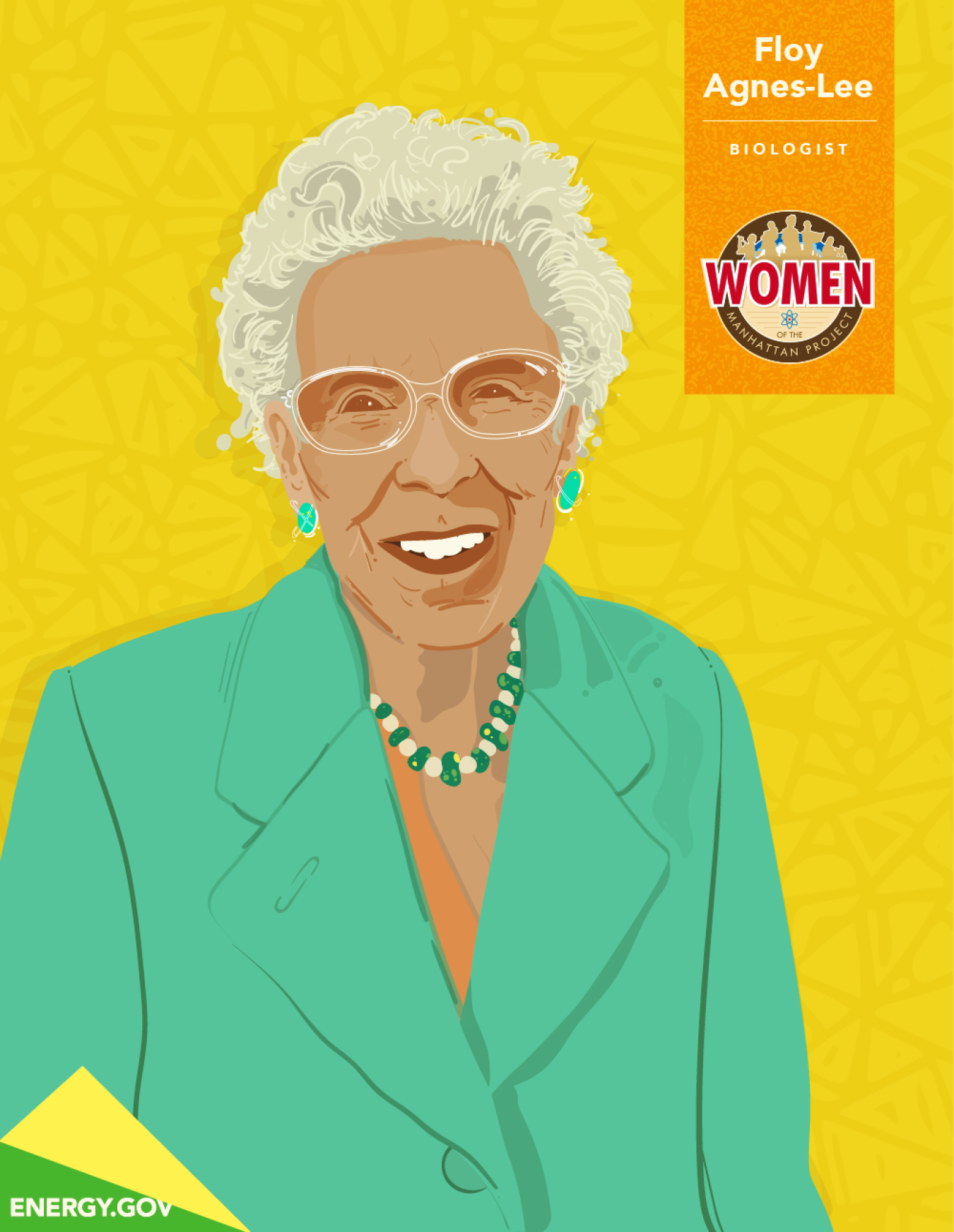The fourth woman from the Manhattan Project we're highlighting this Women's History Month is Floy Agnes Lee.
March 29, 2018
It’s Women’s History Month on Energy.gov. During the month of March, we’re highlighting the great contributions to science, technology, engineering and mathematics (STEM) fields made by women who worked on the Manhattan Project, the top-secret program during World War II that ushered in the nuclear age. See the rest of our coverage at energy.gov/manhattanproject.
Floy Agnes "Aggie" Lee worked as a hematology technician, testing the blood of scientists who'd been exposed to massive amounts of radiation during the Manhattan Project. She passed away earlier this month, but her legacy as a fierce advocate for STEM education and a minority woman who did pioneering research on radiation and cancer lives on.
Here are five surprising facts about Aggie Lee:
- She was half-white and half-Native American. Her father was a member of the Santa Clara Pueblo. Her mother was German-American. Her parents met as teachers at the Albuquerque Indian School.
- She played tennis with Enrico Fermi at Los Alamos, and usually won. In an interview with Voices of the Manhattan Project, she said she finally let him win a game after finding out who he was at the end of the war.
- One of the scientists whose blood she tested was Louis Slotin, who was exposed to a severe dose of radiation during an experiment in May 1946. She recalled his body ballooning, and he died nine days after the experiment. The radioactive core that killed him had earlier claimed the life of another scientist and became known as the "demon core."
- Before becoming a scientist, Lee wanted to become a member of the Women's Airforce Service Pilots or WASPs. She worked in a grocery store to pay for flying lessons and was only one flight shy of qualifying when the program was disbanded in 1944.
- After the war, Lee moved to Chicago and worked for Argonne National Laboratory doing research on cancer and radiation biology. She eventually earned her doctorate in zoology from University of Chicago.

